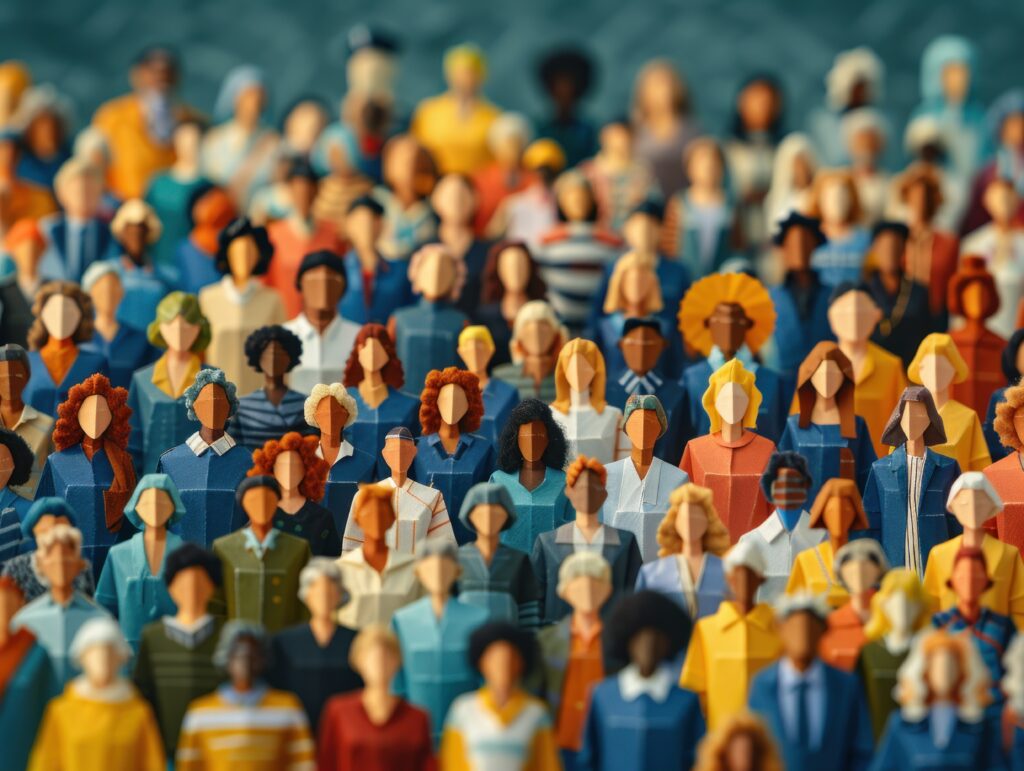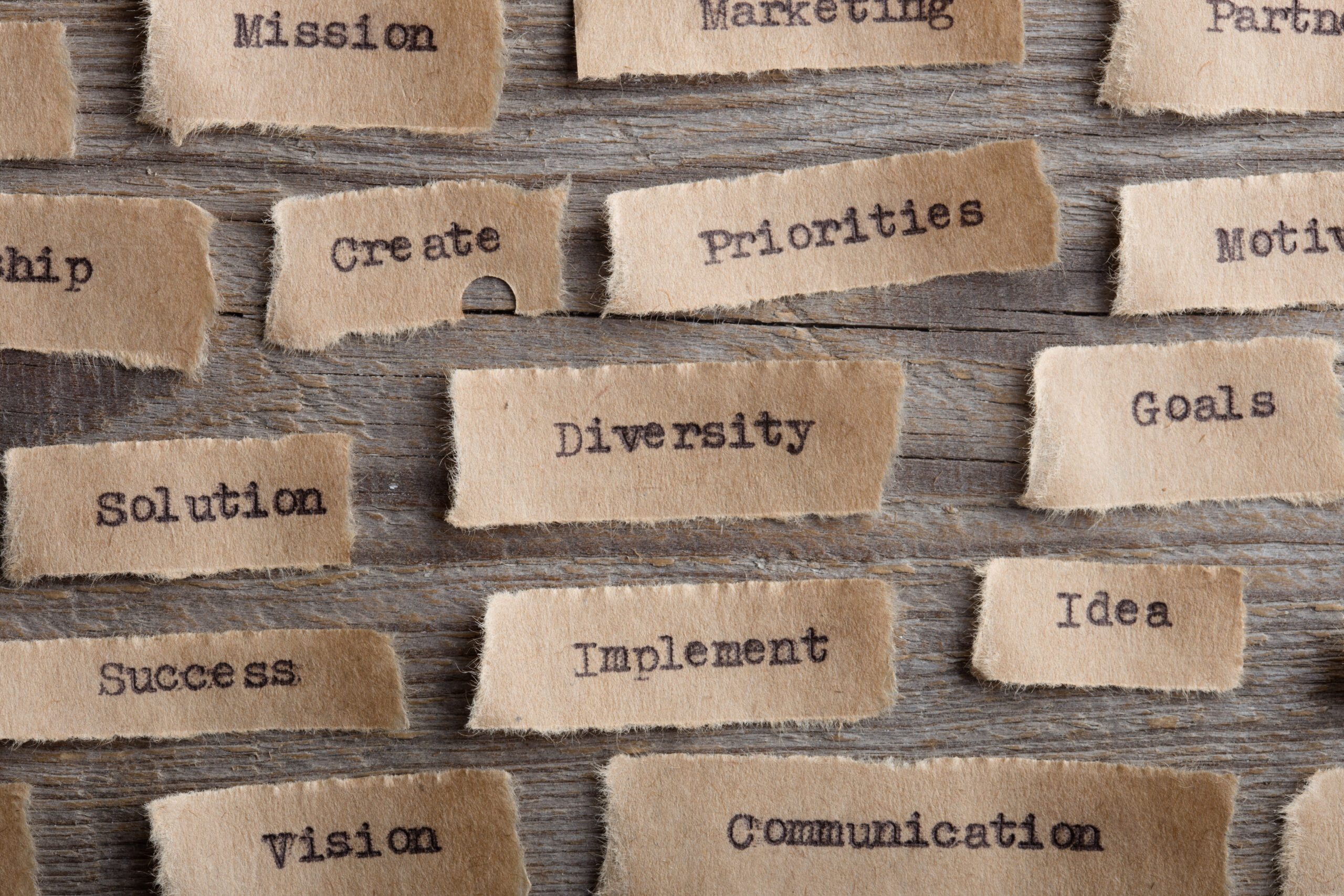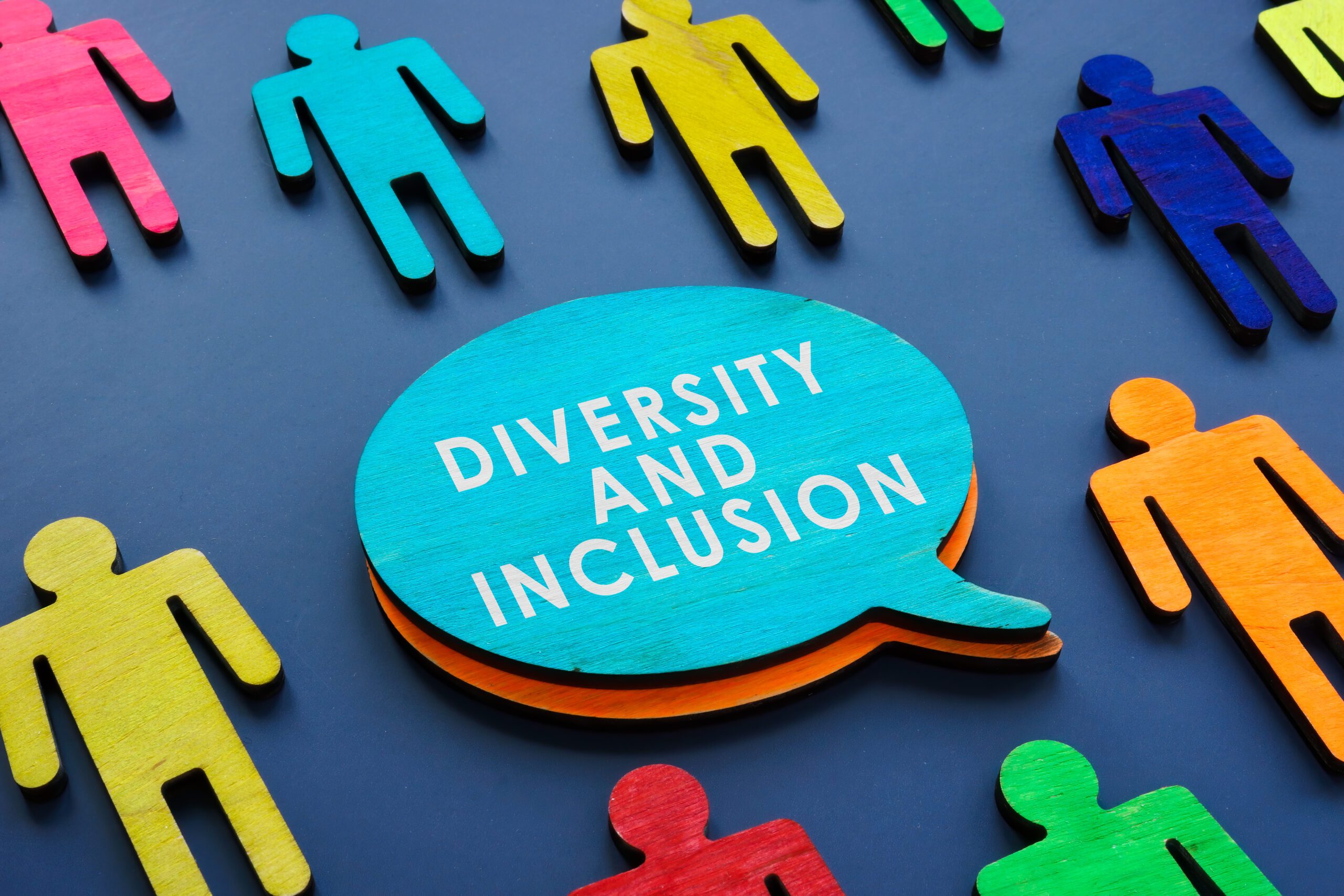We need diversity, as we need as much balance as an imbalance to change throughout our lives, including throughout our professional lives

Diversity and inclusion
Man… Woman… Young… Old… European… Asian… French-speaking… Portuguese-speaking… City dweller… Village dweller… Black… White… Rich… Poor… Single… Married… Muslim… Christian… these are some of the boxes that are well-known so far, and in which we can lock up human beings. But beware, once the box is created, we can easily open and close it to carefully lock the human beings we encounter. What a dangerous game… the opposite of the target: inclusion!

Diversity and Inclusion – The Letter
The term “diversity” comes from the Latin “diversus,” meaning “different” or “separate.” Over time, the word has evolved to describe variety and disparity in various contexts. It is seen as a concept that encompasses differences between individuals, whether they are cultural, ethnic, social, economic, religious, generational, gender, sexual orientation, or other.
The term “inclusion,” on the other hand, comes from the Latin “includere,” meaning “to put into” or “to include.” The basic idea of inclusion is to include or integrate individuals or groups into a larger whole, whether that be a community, organisation, society, system, or process.
A natural trend of humanity
I am not a specialist but let’s try on the use of two concepts adapted to the need for the following demonstration. The notions of entropy and negentropy, derived from thermodynamic and information theory[1], have also been adapted in social sciences to describe and analyse social systems.
Entropy:
Entropy in social sciences is compared with the tendency to disorder or complexity of a social system. It describes the level of uncertainty, confusion, or unpredictability in a system. For example, in a society where rules, norms and relationships are poorly defined or constantly evolving, entropy will be high.
Negentropy:
Negentropy is the opposite of entropy and represents order, structure, predictability, and simplicity in a social system. It describes the trend towards prioritisation, regulation, and stabilisation of a system through rules, standards, and institutions. In a society where these elements are well-defined and stable, negentropy is high.
The idea of entropy and negentropy is of significant interest in the human and societal context, as it reflects the course of the walk of a tightrope walker on a floating rope. In this analogy, the tightrope walker symbolises the balance of the individual and society, oscillating between entropy and negentropy. Human life can thus be perceived as moving in the same way between seeking balance and stability in an uncertain environment, or imbalance when the environment is too predictable.
When an environment is too stable, humans can become tired of routine and actively seek new challenges to maintain their interest. Conversely, when an environment is too unstable or unbalanced, individuals tend to seek to organise it and make it predictable to promote their well-being and fulfilment. This tension between entropy and negentropy is therefore a fundamental driver of human development and progress, both at individual and collective levels.
Diversity can be seen as a source of entropy, as it introduces differences and variations in a system, which can sometimes disrupt balance and stability. However, this diversity is essential to foster innovation, adaptation, and resilience to change.
On the other hand, the quest for negentropy, which aims to maintain a certain level of order and control, can sometimes lead to standardisation and uniformity, which limits diversity and may restrict the adaptability of a system. It is therefore important to strike a balance between these two concepts to reap the benefits of diversity while managing the challenges it presents.
This means recognising and valuing differences, while developing mechanisms for dialogue and cooperation to manage conflicts and tensions that may arise. This also means not being afraid of conflict (which is different from violence) but rather considering it as a necessary step for inclusion. In this perspective, the balance between entropy and negentropy is becoming a major challenge for individuals and societies, which seek to reconcile diversity and social cohesion.
—
[1] Introduced in 1850 by Rudolf Clausius, physicist, and taken over in 1948 by Claude Shannon, electrical engineer. https://en.wikipedia.org/wiki/Entropy and https://en.wikipedia.org/wiki/Negentropy
In a relationship with the other
Diversity is lived and experienced through interactions and interpersonal relationships. In a diverse society or group, individuals interact with people with different backgrounds, cultures, beliefs, experiences, and perspectives. These interactions create rich and inspiring exchanges, but they can also create tensions and challenges.
The relationship with each other is therefore a privileged expression of diversity, which can be both enriching and complex. Developing interpersonal skills is essential to better understand and appreciate diversity, and thus, once again, foster social cohesion and living together. These skills include kindness, open-minded thinking, empathy, communication, and the ability to deal with disagreements and conflicts.

Environment and culture suitable for welcoming diversity
The environment and culture specific to welcoming diversity are key elements in creating a space where people feel included and valued.
Here are some elements that contribute to creating an environment and culture that is conducive to the reception of diversity:
- Host culture: A host culture is a set of values, norms and practices that foster the integration and sense of belonging of individuals from diverse backgrounds. This will include, for example, warm welcome, respect, active listening and open communication, flexibility, coaching or environmental adaptation measures. These fosters trust. Some examples of practices that can help create a welcoming culture are welcome events, discussion spaces, mentoring, support services or services trained to adapt the working environment to specific needs.
- Languages and communication: they are essential to create a welcoming environment and culture. They enable access to information, mutual understanding, social integration, and the elimination of barriers. An example of good practice in this area: Translation of all sources of information into all languages. Here I am thinking particularly of the various publications on the intranets of the Institution in which I am working. They are limited to certain languages. However, these sources are crucial: they make it possible to adapt to administrative standards within the Institution (including rights and duties). How is it possible that with current technologies, all these publications are only made in English, with a French or German translation here and there in the best cases? We also need to integrate in this sense the specific needs of people with disabilities.
- Training and awareness raising: Training and awareness of inclusive qualities can help create a welcoming culture (including extended language training). By inclusive qualities, I mean the one described above in the host culture, namely warm welcome, respect, active listening and open communication, flexibility, and the accompanying relationship. It is also important to develop conflict management skills (there is no need to be afraid of it) and non-violent communication.
- Engaged leadership: leadership engaged in hosting diversity and inclusion can help create a more welcoming environment and promote inclusive culture.

Statistics or danger of counting diversity
Are you familiar with this dedicated formula and so much appreciated by ethnicised people who hear it: “I am not racist; I have a black friend”? It is often used by someone who would like to try to prove that is not racist, but in fact it only shows that has a very limited understanding of what it means to be racist.
Similarly, when organisations or individuals use diversity as an element of marketing or communication without really understanding the challenges and needs of ‘people from diversity’[1], this can be perceived as a form of ‘fake diversity’ or ‘symbolic diversity’.
This means that diversity is important, but only for the needs of the image of the organisation or individual, rather than to really understand and respond to the needs of ‘people from diversity’.
It is important to recognise that diversity is a complex and multifaceted reality that requires deep understanding and concrete action to be truly effective. Simply displaying symbols of diversity, counting them (as one counts heads of cattle) or making empty declarations is not enough to be considered a diverse organisation.
Rather, concrete steps are needed to create an inclusive and welcoming environment for human beings, listening to their needs and concerns, involving them in decision-making processes and taking action to combat discrimination and inequality.
—
[1] The concept of ‘person from diversity’ is a shocking term for me. It is used only in this section to amplify the absurdity of considering some human beings as ‘derived’ from diversity (as a result of an equation whose variables are not common?). I prefer by far the very simple term of human being.
Too late: diversity = these famous small boxes
What sadness to see that when we talk about diversity, human beings become just a series of variables put together, a kind of magic meticulous potion thrown into a diversity pot… Whether I am a man or woman, Buddhist, or secular, white or black… Tick your boxes for as long as you want. You have no idea of the diversity, the wealth, which is in me. Why? There is no humanity anymore in your boxes.
To write this article, we launched a call to testify. I am convinced that the testimony contributes to knowing the diversity and richness of the human beings that are part of a business, society, organisation, no matter what.
Let me share only one of them. It is sits out of the now generally accepted boxes (such as those mentioned above), and is deliberately chosen to demonstrate the subject:
« I remember well when I heard that a guy I used to be good friend with in middle school (11-13 years old) had been arrested. It was already some years that I was only seeing him around the neighbourhood, being much less close with him. I went to high school and then university. He did not finish high school and went on selling ecstasy, and then cocaine, for which he was caught.
I also remember well when I heard in the gym that guy I saw there few days earlier has been stabbed to death in front of a bar some hundred meters away. A good guy who messed up with the wrong people. And I saw many more similar stories involving people close to me.
In my mind and heart, this is the diversity I carry with me, and in me. Being different than most of all colleagues I had the pleasure to meet in over 12 years in the EU institutions. Some are already “EU officials second generation”, meaning sons and daughters of EU officials, many studied in prestigious academic institutions, and in their stories, they have a parent who is a lawyer, a doctor, an engineer, a professor. My loving and supporting parents used to work as a blacksmith and a wage earner in the canteen of the FIAT factory.
This is not a diversity much spoken about: coming from a disadvantage socio-economic environment. It is less “charming” than other diversities, and less “political”. Or probably it is “too political” to be spoken about at the highest echelons of society. I often found myself alone to fight with the weight of this diversity. I must say that the fight is internal, in my mind, as I never had the feeling of being looked down on by any colleagues for my background. Even though here and there I heard some very classist remarks (not addressed to me).
When I look at colleagues who climbed the corporate ladder higher, I always think that even though I did not reach their height, I have probably done more steps than them. I think we all run in a marathon, but some contestants join the race only at KM 15, some even at KM 30.
Working for the EU institutions changed my life, and the one of my kids, giving me a great opportunity to make a big socio-economic jump.
I would like to go in the peripheries of Europe and say to those good hard-working kids that do not see many opportunities around them that it is possible to find social justice. It is possible to improve your life, and to work with amazing people for a great project such as the European Union, and to contribute in making a difference yourself in the life of many EU citizens and beyond. The difficulties can create strength and resilience. It IS possible! »
This testimony leaves me speechless at every reading! I am won by the same kind of amazement as the one felt when a piece of art deeply touches me.
In conclusion
We need diversity, as we need as much balance as an imbalance to change throughout our lives, including throughout our professional lives. Counting it makes diversity discriminating more than inclusive and lacks the humanity needed for society in general. It is better to value processes or ways of managing diversity than to make them a result to be achieved, another KPI[1].
Everything happens at the level of the environment and culture appropriate to welcoming diversity. The latter is an invitation to be curious and open to differences, to actively seek the wealth that a person can be and to integrate this attitude of healthy curiosity and openness into all aspects of one’s life, both professional and personal.
—
[1] Key Performance Indicator
—
This article was produced with the assistance of the generative Artificial Intelligence tool Nous Hermes Mixtral (consultation October and November 2024).

J.L
About the author
J.L. are the initials of an anonymous author, in service with the European Commission since the late 2000s (and a member of Union Syndicale Brussels since the first half of the 2010s). He does not wish his name to be quoted, and we respect his choice.